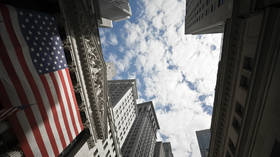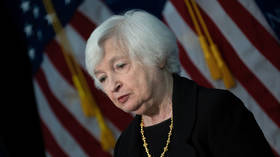US banking sector on brink of seismic shift – experts

The major turmoil that rocked the US financial sector in March following the collapse of several midsize banks is far from over, experts have told CNBC.
The outlet talked to a dozen executives, advisers, and investment bankers who predicted that rising interest rates, losses on commercial real estate, and heightened regulatory scrutiny will add to the pressure on regional and midsize banks, leading to a wave of mergers.
Many of the country’s 4,672 lenders will be taken over by stronger banks over the next few years, either through market forces or regulators, the experts warned. “What is coming will likely be the most significant shift in the American banking landscape since the 2008 financial crisis,” the report cited them as saying.
“You’re going to have a massive wave of M&A among smaller banks because they need to get bigger,” said the co-president of a top-six US bank, who declined to be identified. “We’re the only country in the world that has this many banks,” he added.
According to Brian Graham, a banking veteran and co-founder of advisory firm Klaros Group, for at least 15 years “US banks have been awash in deposits and with low rates, and it cost them nothing.” He added, however, that the situation has “clearly changed.”
One chief executive projected that some banks will survive by “being the buyer rather than the target,” noting “we could see over time fewer, larger regionals.”
The forecast was echoed by Fitch banking analyst Chris Wolfe, who previously worked at the Federal Reserve Bank of New York. Half of the country’s banks will likely be swallowed by competitors in the next decade, he warned.
Several US banks with combined assets of more than $500 billion collapsed over 10 turbulent weeks earlier this year. Their rapid demise fueled fears of a repeat of the global financial system’s meltdown in 2008.
The latest crisis began in March, when crypto-focused regional lender Silvergate declared plans to voluntarily liquidate after suffering losses due to the collapse of crypto exchange giant FTX. Two days later, US regulators shut down tech and start-up focused Silicon Valley Bank. Soon after, San Francisco-based First Republic Bank fell victim to the turmoil. It was seized by US financial regulators and acquired by JPMorgan, having already received a $30-billion rescue shot from top Wall Street banks in the form of deposits.
Regional lender PacWest Bancorp became the latest American bank to be caught up in the crisis in May, when it announced talks with potential partners and investors about strategic options following a 60% stock rout.
Economists continue to raise concerns about the stability of the US banking sector despite claims from regulators that the industry is financially sound.
For more stories on economy & finance visit RT's business section













